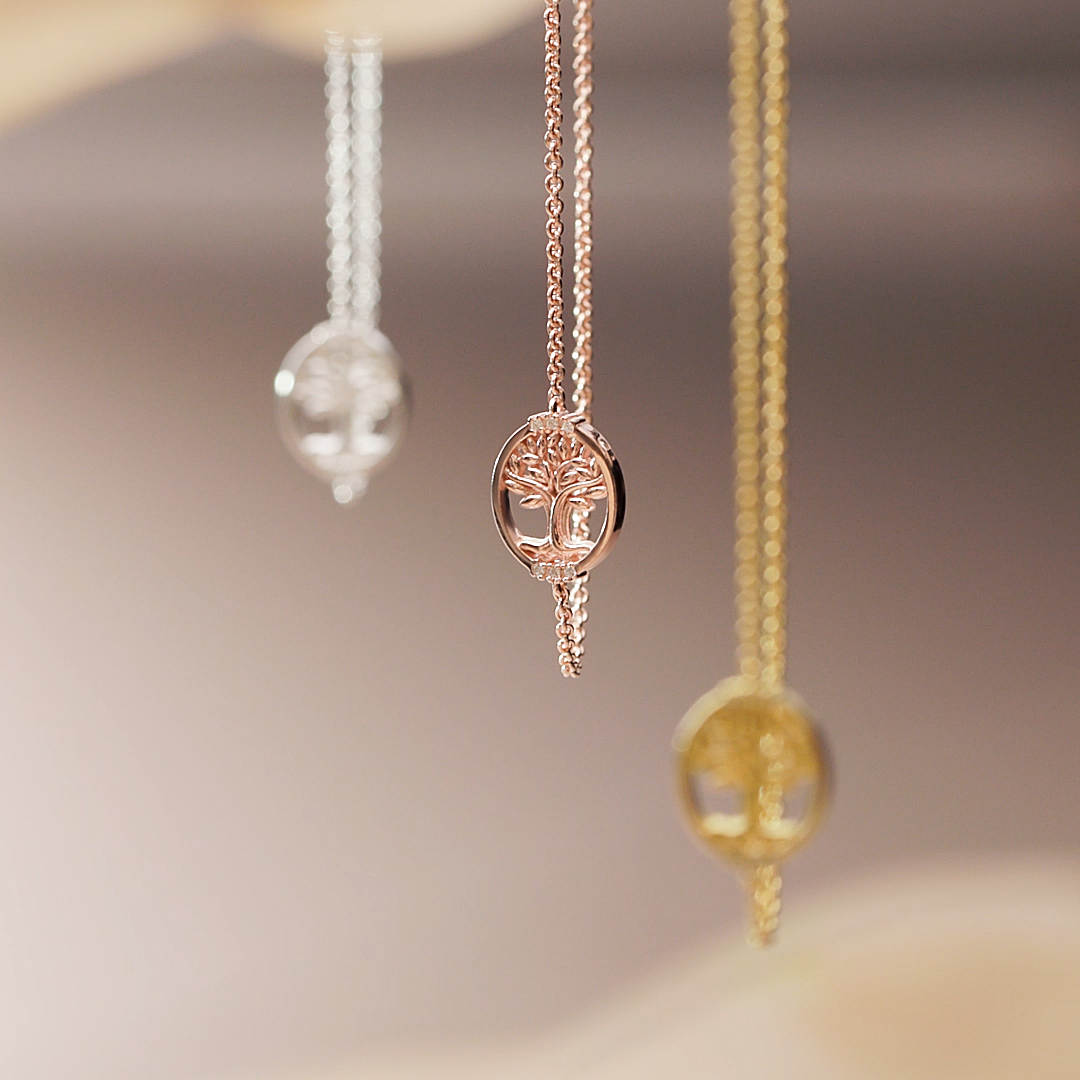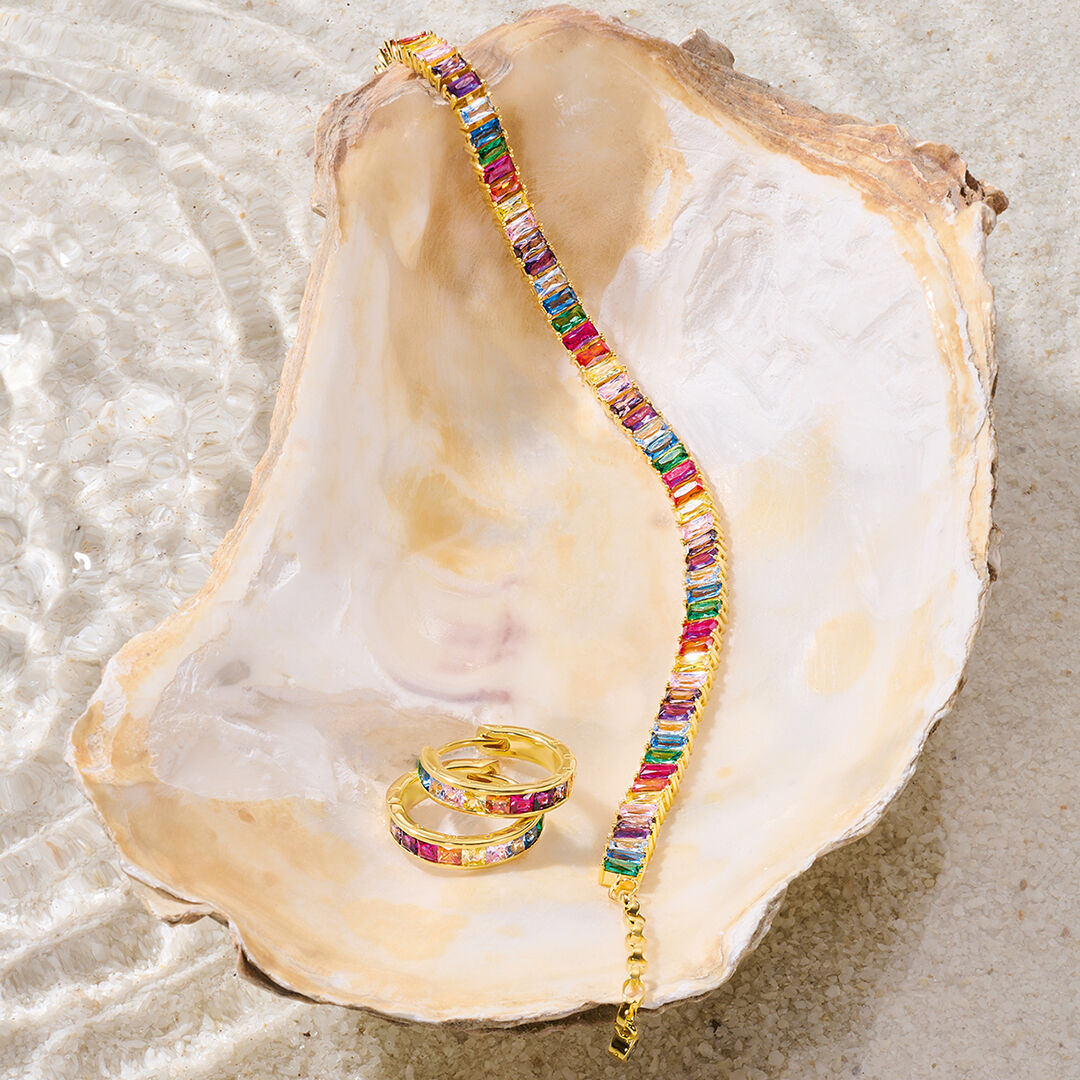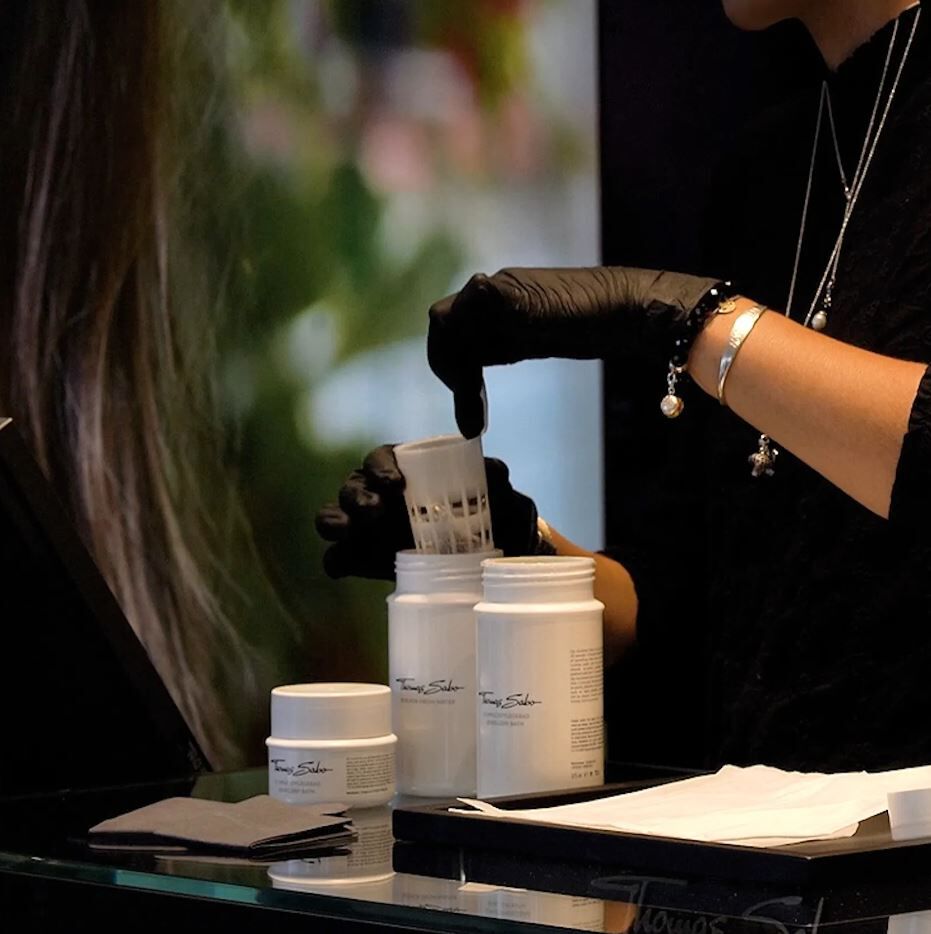
18k yellow-gold plated – what is its meaning?
The expression 18k yellow-gold does not refer to a pure precious metal, but to an alloy. A certain amount of other metals is being added in order to process the material better and to create different pieces of jewellery. Pure gold is too soft, jewellery made of it would be way too soft and prone to scratches.
The hallmark 750 indicates 18k gold’s fineness and how high the percentage of pure gold is in any alloy. Out of 1000 pieces, 750 are pure gold and 250 consist of other precious metals such as silver, palladium and platinum or semi-precious metals such as copper. For gold alloys, base metals such as nickel, titanium, cadmium, zinc or tin are used as well.
In Germany, the fineness is indicated per mille. It is just as common to denote the fineness by carats, especially in Great Britain, the US, South-East Asia and Middle Eastern countries. 18k corresponds to a 750 gold alloy.
p>Important: when referring to 750 gold, the expression 18 carat does not correspond to the metric carat. The latter is used when it comes to a diamond’s weight. Yet, 18 carat denotes the gold’s fineness and not its weight.
From white to red – the many shades of gold
The alloy’s main advantage is the fact that the precious metal can be molded into jewellery much easier. Secondly, an alloy enables the creation of different shades of gold. By adding further metals to pure gold, its original colour changes. The classic is the so-called yellow-gold. It consists of 75 % fine gold, 12,5 % silver as well as 12,5 % copper and is characterized – as its name suggests – by its yellowish golden colour. The higher the percentage of copper compared to the percentage of silver, the more reddish coloured 18k gold will result. For a whiter colour, a higher percentage of white metals will be added. Usually palladium, nickel and tin.
18k gold and its different colour nuances:
- Yellow gold
- Orange gold
- Rose gold
- Red gold
- White gold
What value does 18k yellow-gold have?
The yellow, shimmery metal has been fascinating people for thousands of years. They appreciated its uniqueness and attributed value to it accordingly. For example, by creating ritual objects as well as jewellery. In the 6th century B.C., the precious metal became a means of payment – in the form of gold coins. Nowadays, gold is an investment that is deposited in many central banks all over the world as a reserve asset. The metal is being traded in its purest form or as an alloy. Supply and demand determine the price of 18k yellow-gold. The latter can always change, which is why one always refers to the current gold price.
A rare precious metal – gold and its occurrence on earth
On earth, gold exists in elemental, metallic form and is enclosed by rocks in primary deposits. It has to be detached from it, in order to extract it in its purest form and to process it afterwards. The biggest gold occurrences are those in China, Australia, Russia, the US and Canada. Smaller amounts do exist in Germany close to the Rhine in secondary deposits. The water has eroded the rocks in the river and extracted the gold that was located there. It settled as alluvial or placer gold and is called “Rhine gold”. Once the precious metal has been extracted, it can be used in its purest form or together with other metals as a 18k gold alloy.


Using 18k yellow-gold for gold-coloured jewellery
Jewellery is not always created using pure 18k gold. The precious metal is expensive, which entails that pieces of jewellery made therefrom do have a high price, too. In order to obtain the same aesthetic, 18k yellow-gold plated silver jewellery is oftentimes a popular alternative. At THOMAS SABO, we use 18k gold in the colours yellow and also rose. Our 18k yellow-gold rings, chains and gold bracelets look like real gold jewellery.
In order to create ear jewellery, necklaces, pendants and rose gold rings or golden rings, they are being immersed in an electroplating bath. This way, silver jewellery is gold-plated with 18k gold and embellished with a finish that looks like real gold. Alternatively, gold plating can also be applied by hand – by adding flattened gold plate to the jewellery’s surface.
THOMAS SABO gilds its jewellery with an electrolytical plating with 18k gold. The alloy consists of other metals, too, which increase the fine gold’s hardness. Therewith, the gold plating is more durable and protects the underlying silver which has a lower degree of hardness. Our gold plating’s thickness is much higher than those that are considered market standard. Our gold plating is characterized by a thickness of several µ and will last for a long time, provided you wear your THOMAS SABO jewellery properly. Furthermore, we gild those rings, bracelets and further pieces of jewellery more that are usually exposed and used more often.
Care instructions for 18k gold jewellery
Other than silver, gold is hardly or not exposed to any oxidation process. The latter can still take place since further metals have been added to the alloy. If the alloy contains a high percentage of silver, the oxidation process can take place and sulfides can accumulate on the surface. This can then lead to discolouration. As for 18k gold, the percentage of other precious metals is quite low. When it comes to 18k yellow-gold, its percentage of silver amounts to only 12,5 %. Therefore, it is unlikely that jewellery made of this alloy discolours.
18k gold is resistant to external influences. You can wear the jewellery daily, yet you should clean it from time to time. Cosmetic products, make-up, perfume and hairspray can accumulate on the jewellery’s surface. These should be removed since 18k gold can discolour and lose its shine.
Tips for cleaning
- Smooth surfaces can be cleaned with a special cleaning cloth for sparkling results.
- Warm water and a mild cleaning product remove dirt effectively.
- Designs with cultivated freshwater pearls, jasper, imitation turquoise, reconstructed coral and other stones should not come into contact with any cleaning product.
- Between the pearls‘ and stones’ settings as well as in engravings and cut-outs, stubborn dirt can accumulate. In this case, we recommend professional cleaning. You can book our in-house, fee-based restoration service.
What should you pay attention to when it comes to gold-plated jewellery?
If your jewellery with a 18k gold plating is made of 925 silver – which is a standard at THOMAS SABO – you can clean it the same way you would clean silver jewellery. Both with a silver cleaning cloth and in a jewellery care bath, you can remove discoloured spots and dirt. Please follow the instructions of the products you choose to use.
How should jewellery made of 18k gold be stored?
In order to enjoy 18k gold longer, you should store your jewellery in a jewellery box or in the supplied jewellery packaging. They both protect it from dust, dirt and damage.
Although 750 gold is particularly resilient, we recommend taking off the jewellery before showering, bathing, sleeping or swimming to avoid unnecessary contact with care products or salt and chlorinated water. Taking off the jewellery protects it from possible damage and helps to maintain the brilliant colour and shine in the long term.
Summary: silver with THOMAS SABO gold plating
- high-quality 18k gold plating with yellow or rose gold
- increase in hardness thanks to an alloy with harder metals
- jewellery made of 925 Sterling silver with a durable, up to several µ thick gold plating
- palladium plating serves as a diffusion barrier below the gold plating
- tarnish protection for 925 Sterling silver
- in-house hallmark on every design that confirms the fineness and authenticity of its materials
100% waterproof: our jewellery is resistant to water, but we recommend avoiding unnecessary contact with care products such as soap or salt and chlorine water to maintain its shine over the long term.
